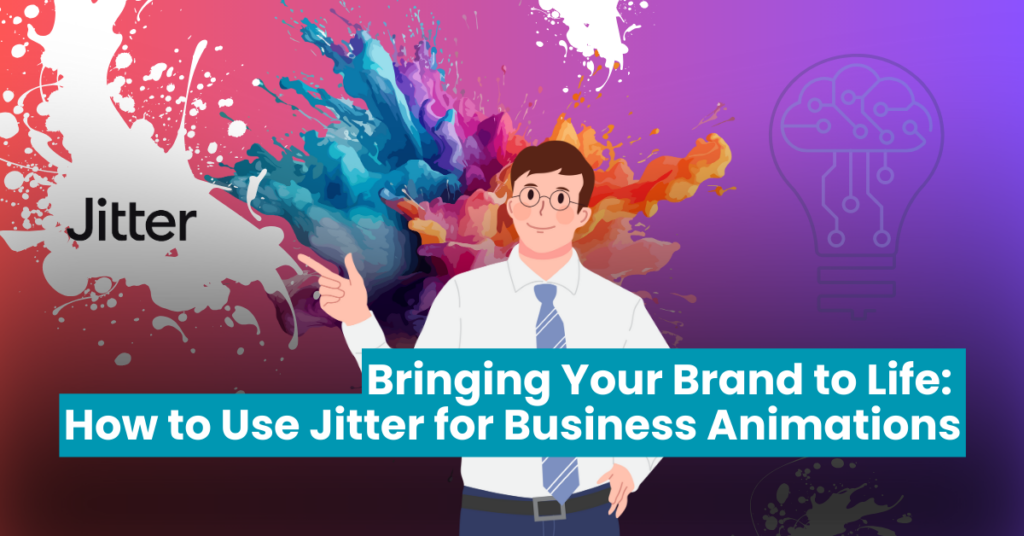
Hi, people who want to become animators! You want to make your business really stand out? To make your business stand out, let’s look into Jitter animation. Up to 80% more people will interact with animated content, according to HubSpot. This makes it a powerful tool for marketing. Moreover, Wyzowl’s research showed that 87% of companies that used animation in their marketing plans saw good results.
What’s the Deal with Jitter in Animation?
First things first – what exactly is Jitter in animation? Simply put, Jitter refers to small, rapid movements that give your animations a lively, organic feel. It’s like adding a dash of caffeine to your graphics, making them bounce, wiggle, and dance with energy.
Jitter animations are all about those tiny, randomized movements that make your designs feel more natural and less robotic. Think of it as the digital equivalent of a slight hand tremor when drawing – it adds character and charm to your creations.
Why Should Your Business Care About Jitter?
Now you might be thinking, “That’s cool and all, but why does my business need Jitter?” Well, my friend, in today’s fast-paced digital world, grabbing and holding attention is key. Jitter animations can:
- Make your brand more memorable
- Add personality to your designs
- Guide user focus to important elements
- Create a more engaging user experience
In short, Jitter can help your brand come alive and stand out in a sea of static content.
Getting Started with Jitter Animations
Ready to shake things up? Let’s break down how to create Jitter animations for your business:
1. Choose Your Weapon (Er, Tool)
There are several ways to create Jitter animations:
- CSS animations (for web)
- After Effects (for video)
- Specialized animation software like Principle or Framer
For this guide, we’ll focus on using Jitter, a popular animation tool that’s perfect for creating quick, eye-catching animations.
2. Get to Know Jitter
Jitter is a user-friendly tool that lets you create animations without diving deep into code. It’s perfect for designers who want to add movement to their work without becoming full-fledged developers.
To get started:
- Download and install Jitter from their website
- Open up the app and create a new project
- Import your assets (logos, icons, etc.) that you want to animate
3. Add Some Shake, Rattle, and Roll
Now for the fun part – adding Jitter to your elements:
- Select the object you want to animate
- In the animation panel, look for the “Add Effect” button
- Choose “Jitter” from the list of effects
- Play around with the settings:
- Intensity: How strong the jitter effect is
- Speed: How fast the jittering occurs
- Direction: Which way the jitter moves (horizontal, vertical, or both)
Pro tip: Start subtle! A little Jitter goes a long way. You want to enhance your brand, not make people seasick.
4. Timing is Everything
When it comes to Jitter animations, timing can make or break your design. Consider these tips:
- Use quick bursts of Jitter to draw attention to important elements
- Add a slight delay before the Jitter starts for a more natural feel
- Experiment with different durations to find what works best for your brand
5. Jitter in Action: Business Use Cases
Now that you’ve got the basics down, let’s look at some ways to use Jitter in your business animations:
- Logo Reveal: Add a subtle Jitter to your logo as it appears on screen for a dynamic entrance.
- Call-to-Action Buttons: Give your “Buy Now” or “Subscribe” buttons a gentle shake to make them more clickable.
- Loading Animations: Turn boring wait times into fun moments with jittery loading icons.
- Social Media Posts: Make your content pop on crowded feeds with animated elements.
- Product Showcases: Add life to product images or 3D models with strategic Jitter effects.
Taking Your Jitter Game to the Next Level
Ready to become a Jitter master? Here are some advanced tips:
- Combine Jitter with other animations for more complex, interesting movements.
- Use Jitter to simulate natural phenomena like leaves rustling or water rippling.
- Create character animations by applying Jitter to different body parts for a lively effect.
- Experiment with audio-reactive Jitter that moves in time with music or voice-overs.
Common Jitter Pitfalls to Avoid
As with any powerful tool, Jitter can be misused. Watch out for these common mistakes:
- Overuse: Too much Jitter can be distracting or even annoying. Use it sparingly for maximum impact.
- Inconsistency: Make sure your Jitter animations align with your overall brand style and tone.
- Performance Issues: Heavy animations can slow down websites or apps. Optimize your Jitter effects for smooth performance.
- Accessibility Concerns: Ensure your animations don’t cause issues for users with motion sensitivity.
Wrapping Up: Jitter Your Way to Success
There you have it – your crash course in using Jitter for business animations! By now, you should be ready to add some shake, rattle, and roll to your brand’s visual identity. Remember, the key to great Jitter animations is finding the sweet spot between eye-catching and subtle. What if you want to find more tools like Jitter that use AI to make your work easier? Try to visit AIForEveryone. They offer many free AI tools, such as ones that can turn voice into text, videos, images, and text from speech.
So go ahead, download Jitter, and start experimenting. Your brand’s personality is just waiting to burst into life with some well-placed wiggles and shakes. Who knows? With a bit of practice, you might just become the Jitter genius your business never knew it needed!
Happy animating, and may your brand always stay jittery (in the best way possible)!

